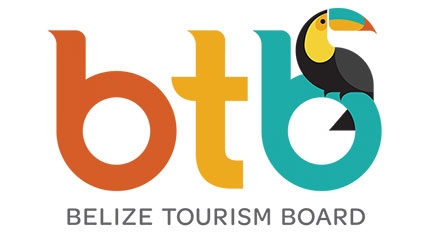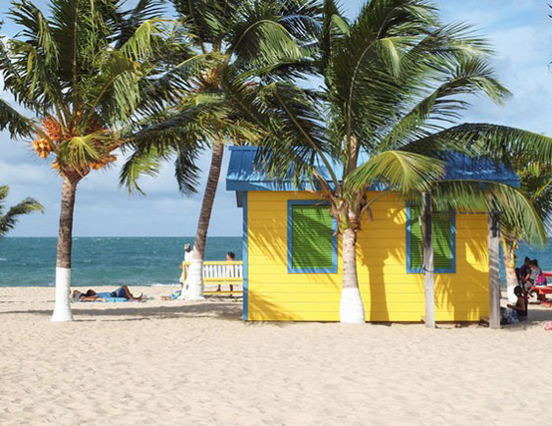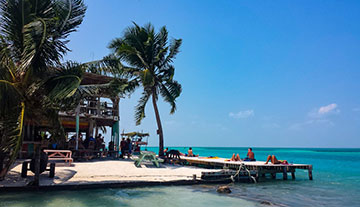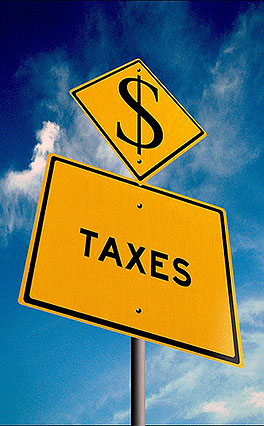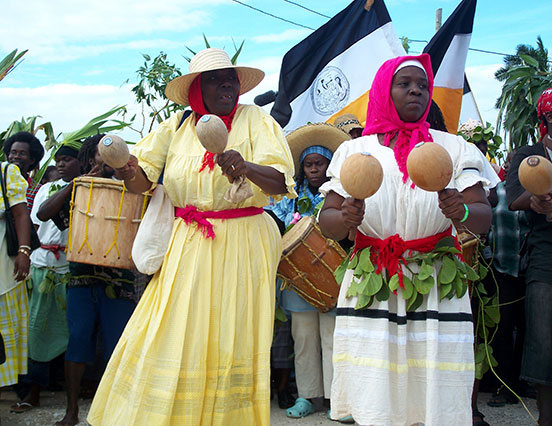Discover Southern Belize with the Belize Tourism Board.
A Snapshot Of Daily Life In Sunny, Snow-Free Belize
Life here is busy, but it’s a good kind of busy. We have less driving and commuting than when we lived in Ohio…and we don’t miss traffic jams, shoveling snow, and de-icing the car in the morning, which used to take up so much time. Here, grocery shopping or paying bills involves a bike ride or a walk in sunny weather, where you can hear birds and see the beach.
We’ve just returned from a fun weekend of showing our family the islands of Ambergris Caye and Caye Caulker, where we snorkeled with turtles, ate a mountain of lobster, swam in the ocean, lounged in hammocks on the beach, and kayaked in the Caribbean.
I also got the chance to show my family the unbelievable number of things to do in our little, thriving village. We went tubing on a lazy river through the tropical forest and saw crocodiles and monkeys at Monkey River. Another day we hiked up a small mountain with 360-degree views of mountains and the Caribbean, and swam in a waterfall. We also visited Mayan ruins, hung out for an afternoon with a Maya family and learned how to make Maya chocolate.
Belize has so many great activities to offer. As part of our regular week, we like to kayak, go fishing, and hike—we try to choose a couple activities a week that we know we could never do in our hometown (especially in winter).
A bonus to living here is that we’ve learned how to do things like the locals. For example, we’ve found out where they go on their days off…they know where the most beautiful waterfalls are, the best hiking spots, and the places to snorkel without taking an expensive excursion.
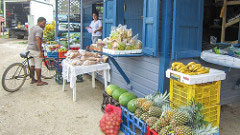
Another thing we like to do is wander around the farmer’s market. The produce comes from local, organic, family farms, and everybody shops there…and I pay about 60% of what I was used to paying in the U.S. The variety of exotic fruits and vegetables changes weekly; everybody seems to find their favorite stands where you know the stand owners by name, and they will even explain how to cook with the produce. Sometimes they will even throw in a sample or two for free.
I normally spend about $20 to $40 and walk away with four bags of produce. The same amount in the U.S. would cost double if not more, and it is all organic. With all the fresh produce I like to make homemade salsa, pickled onions, and huge salads. While I miss convenience food sometimes, I have learned how to use the ingredients available and cook more like a local.
Even though Placencia is small, we seem to have endless activities to keep us busy. We’ve been here for two years and there’s still so much we want to do. Next on our agenda is getting certified to scuba dive, kayaking to the cayes you can see from our shore, and we have more hiking trails we still want to try. The longer we live here, the better the experience as we find out so many secret places a bit off the tourist track.
Source: International Living
Top Ten Things to Do in Caye Caulker, Belize
Caye Caulker is a tranquil paradise in Belize that is quickly making a name for itself as one of the top island destinations for budget travel in the Caribbean.
We stayed on beautiful Caye Caulker for two weeks while backing packing from Mexico to Panama, and we could have easily stayed for another two. Or ten. And we honestly can not wait to return.
The vibe on this rustic island is completely laid back and relaxed in true “island life” fashion. There are very few major structures on Caye Caulker, and almost no motorized vehicles, other than those used for official business. Visitors spend their days lounging around, taking in the golden sun and the azure waters. Those craving more action partake in the wide selection of water based sports activities the island offers. There is a bit of a mild night life scene on Caye Caulker, but in general peace and quite reign supreme.

Anyone who plans on traveling to Belize, especially those looking to keep their travel costs down, should make sure to drop by Caye Caulker. Getting from Belize City to Caye Caulker is pretty easy. You can read about transportation options here.
Below is a list of things to do in Caye Caulker, most of them either cheap or totally free. You should try everything on this list at least once when visiting the island paradise that is Caye Caulker. We doubt you will be disappointed.
Things to do in Caye Caulker

The Split
Where all the cool kids go to hang out, the Split is located on the north most end of the island. Spend the day relaxing, swimming, meeting new people, watching kite surfers, and soaking up the sun at dock. You can buy drinks from The Lazy Lizard bar, or invest in a 20 Belize ($10.00 USD) bucket of ice cold Belikin Beer. Do so on a weekday for smaller crowds. Or do it everyday, because why not! You’re in Caye Caulker. Relax, and enjoy yourself.

Snorkeling and/or Diving
Snorkel the Hol Chan Marine Reserve with Raggamuffin Tours, and experience some of Belize’s diverse marine life. The Great Blue Hole, one of the most famous diving spots in Central America is about a two hour boat trip from Caye Caulker. We don’t dive (yet) but we have been told that a trip out to the Hole is an absolute blast. So, if you’re into diving make sure to include the Blue Hole into your itinerary.

Kayak or Paddle Board
Paddling out in the afternoon to catch a sunset makes for an unforgettable experience. Rent a kayak near the split for 10 Belize ($5.00 USD) per hour and head out to the north island, to explore mangroves and observe wildlife. Make sure you bring lots of sunblock and plenty of water, and ask around to find out how what the current is like before you set out.

Rent a Private Cabana
Rent a cabana at Ignacio’s or Colinda Cabanas and relax on their docks at night, staring at the innumerable stars and listening to the ocean gently lapping against the moored boats. The cabins are pretty basic, but you won’t be spending much time in them anyway. They are a great budget option if dorm rooms and hostels are not your thing.

Rent a Bike
Rent a bicycle for 15 Belize ($7.50 USD) a day (or get one free from one of the many hotels and hostels that offer them) and cycle about the island. Cars and most forms motorized transportation are banned on Caye Caulker, so a bicycle is the best method of transport. The motto in Caye Caulker is “go slow” so make sure to do just that, the roads are bumpy and filled with little tiny peaks and valleys. If a local sees you speeding along on your bike you better believe you will hear cries of “Hey man, go slow!”

Savor Some Fry Jacks
Fry jacks are a traditional Belizean dish. These delicious pockets of deep fried dough are served as a breakfast item, and can be shaped as squares or triangles. Eat a stuffed Fry Jack for breakfast for 2.50 Belize ($1.25 USD) at Herrolyn’s House of Fry Jacks. Don’t show up after 11 am since they will likely be closed already, and don’t forget to splash some of the amazing hot sauce they provide into your fry jack. Herrolyn’s is located across the street from the bank/ATM. You’ll thank us afterwards! These things are delicious!
Trivia Night
Spend Sunday evening doing trivia with Trivia Mike and the awesome staff at the Barrier Reef Sports Bar and Grill. Make new friends, sample the veggie burger, and order a “Panty Ripper” (rum and pineapple juice) while you are at it.

Kite Surfing
The island of Caye Caulker provides excellent conditions for kite surfing on most days during the high season. A good strong wind blowing off the east side of the island, flat water, and a shallow lagoon make this a great place to learn how to kite surf. Go kite surfing in Caye Caulker with Kitexplorer, and feel the rush of riding the wind!
Fran’s BBQ Grill
Have lunch for 10 Belize ($5.00 USD) at Fran’s lip-smackingly good BBQ grill. We can’t give you Fran’s exact location, since she doesn’t have an address. Fran sets up show along the main street along the way to the Split, and hawks her delicious BBQ with a big ol’ smile on her face. As the sign says its “Frantastic!!”

Go Slow
Finally… Go slow. It’s the motto of Caye Caulker, and you should keep it in mind. Go slow and enjoy yourself. You are in paradise!
Source: Just A Pack
Get the Most from a Belize Offshore Foundation
An offshore foundation is one of the major ways for savvy investors to get the ultimate tax benefits and privacy protection. There are popular offshore tax havens, like Belize, that provide unmatched tax benefits for international investors like no capital gains tax, no income taxes and other tax exemptions.
Here are the main benefits of establishing a Belize offshore Foundation.
Asset Protection
Ensuring that your assets are managed in the right manner is a big concern for many people. In order to avoid having any legal rulings imposed on your assets and risk losing the rights to them, investing the assets in an offshore foundation would ensure that you remain total control over their administration.
Tax Breaks
Offshore foundations in Belize provide a wide range of tax breaks that make them very desirable to investors. Some tax benefits Belize offers founders of offshore foundations are exemptions from any income tax, business tax, withholding tax, asset tax, gift tax, profits tax, capital gains tax, distributions tax, inheritance tax, estate duty tax, and stamp duties.
Inheritance Planning
This is probably the first reason that comes to mind for establishing an offshore foundation. Offshore foundations are the ideal way to set money aside for your children after you’ve passed without having them accrue any of the taxes listed above. Also, by placing assets for your heirs in an offshore foundation, you get the security of knowing that your assets are totally protected and will only benefit the beneficiary listed in the bylaws.
Retirement Program
Many large corporations use offshore foundations as a vehicle for their employees’ pension schemes. By utilizing the offshore foundation for this purpose, employees are ensured that their funds are secure and can be easily disbursed via the rules in the foundation’s bylaws. Because the pensions’ funds will be placed in the offshore foundation, employees will receive a higher interest rate on the money since it is not taxable.
General Overview & Institutional Strengthening for Belize Tax Administration
Review to propose a more efficient tax system
As may have become quite conspicuous in the last two installments of EDC’s Strictly Business, the Trade and Tax Revenue process, being spearheaded by the Trade and Tax Committee (The Committee), is designed primarily to achieve increased efficiencies in the tax administration processes in Belize, whilst simultaneously improving the competitiveness of Belize’s private sector.
As discussed earlier, a principal objective of the review is to identify plausible amendments to Belize’s tax administration systems. This process speaks directly to the concerns raised repeatedly by the private sector that the tax administration process is a “major constraint” to business activity.
Consequently, there exists a natural consensus that any measure to streamline the tax system is welcome. Therefore, one of The Committee’s most anticipated recommendations would be as it relates to effective means through which information systems can be merged, and methods for rationalizing the tax-collection functions of various government bodies.
But, as Amilin Mendez, policy analyst for the Public-Private Sector Dialogue (PPD)—the EDC’s Secretariat—explained, the project encompasses more than the institutional strengthening and streamlining of the Tax Administration System.
“The Committee is also tasked with looking at the taxes themselves, and proposing ways in which we could address the concerns raised regarding Belize’s income tax, consumption tax, and trade-tax rates,” Mendez explained.
In last week’s “Strictly Business”, the trade-related taxes took center stage.However, while trade-related taxes contribute a significant portion of Tax Revenue to government, Mendez explained that that’s not the only area that needs to be assessed. “There’s also need for business taxes to be analyzed and for a revision of the tax incentives policy that could lead to an improved framework that would generate more investments.”
While Mendez stated that the EDC cannot predict what specific changes will be recommended as they pertain to the business tax regime, she was able to underscore the point that the overall goal remains the same: to improve the business climate without adversely affecting government revenues that are needed to provide essential services to the public.
“Whatever proposals come from The Committee has to be ‘revenue neutral’. Therefore, any proposal for modifications to the business tax regime, for example, has to simultaneously make doing business easier in Belize, without carelessly decreasing a revenue stream that generates about 25 percent of government revenue,” Mendez said.
She explained that the two goals are equally important. “When, for example, studies such as the World Bank’s Enterprise Survey show that more than 56 percent of the private sector representatives surveyed found ‘tax rates’ as major constraints to business, it is imperative for us to look at this area seriously,” she add. “Therefore, we should look at The Committee’s proposals in this area with interest.”
Notwithstanding the above, any adjustments would have to be circumspect when it comes to how they impact such a significant portion of government revenue.
“Government still needs to ensure that the goods and services it provides can continue effectively; the salaries and wages of public sector workers—who just received a substantial salary adjustment—can be met; interest payments still need to be made, and the list goes on,” she explained. “Therefore, the goal of ‘revenue neutrality’ is just as important.”
The review is also looking at the fiscal and export incentives programs in Belize. EDC’s Co-Chair Amparo Masson explained that the incentives policy is founded on three “instruments”: the Commercial Free Zone (CFZ), the Export Processing Zone (EPZ), and the Fiscal Incentives Act. In the case of the latter mechanism, investors can obtain exemptions on indirect taxes and custom duties.
“While these systems have their uses,” Masson explained, “they are also complex in their administrative procedures, and they also have the potential to create distortions in the economy. We felt that it was also necessary to ask The Committee to look at ways where this area can also be made more effective and efficient.”
Masson explained that The Committee will look at all three areas (the CFZ, EPZ, and the Fiscal Incentives Act) to assess the revenue and efficiency costs of the three instruments, while,at the same time, analyzing the benefits and costs of installing a new incentives framework. But, like the overall theme of The Review, the two-pronged goal of increased efficiencies and revenue neutrality remains paramount.
About the EDC
The Economic Development Council (EDC) serves as the principal liaison body between the public and private sectors, and is designed to advocate for, plan, and coordinate the institutionalization of policy reforms that engender the business- and investment-friendly environment that is suitable for Belize’s private sector development and overall economic growth. The EDC executes its function by maintaining constant and open communications with both sectors via its technical unit, the Public-Private Sector Dialogue, which is housed in the Office of the Prime Minister. Please contact the EDC/PPD at [email protected].
Source: The Reporter
Celebrating Garifuna Settlement Day
What about Garifuna Settlement Day?
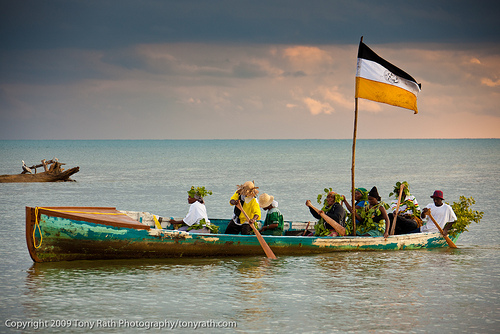 The most important day in the Garifuna calender is November 19. On this day, Garifuna Settlement Day, the arrival of the first Garinagu to Belize by dory (dug-out canoe) is celebrated in all Garifuna communities in the country.
The most important day in the Garifuna calender is November 19. On this day, Garifuna Settlement Day, the arrival of the first Garinagu to Belize by dory (dug-out canoe) is celebrated in all Garifuna communities in the country.
Garifuna Settlement Day is celebrated for a whole week including parades, live music, drumming, dancing, prayers, Garifuna mass and election of Miss Garifuna take place to mark the anniversary. In communities like Dangriga and Punta Gorda, a dory symbolizing the arrival of the first Garinagu, is floating to shore around early morning dawn while local Garinagu – the women dressed in their colourful costumes – tourists and other interested persons await the arrival onshore.
Since 1943 November 19th has been a public holiday in the Stann Creek and Toledo Districts called Garifuna Settlement Day. From 1977 November 19th has been a county wide public holiday.
Learn more about the Garinagu culture here.
UDP Wins Third Consecutive Term
Prime Minister Dean Barrow won a record third consecutive term in the 2015 General Elections held on Wednesday, November 4, 2015.
After elections were called in late September, more than a year ahead of schedule, many hoped for a change in government as the opposing People’s United Party (PUP) quickly regrouped to try and recapture their once lost governance. In addition to the PUP trying to garner what little support was left among the Belizean people, the Belize Progressive Party (BPP) did their best to recruit candidates to their newly formed political party.
Though both the PUP and the BPP fought an honourable fight, neither was able to defeat the UDP powerhouse, thus allowing them to regain control of the government with a whopping 19 seats and counting…of the total 31 seats. The main opposition People’s United Party (PUP) took only 10 of the 31 seats.
Official results have only been announced for 30 of the 31 total constituencies as a recount is currently under way for Stann Creek West. We should be receiving an official update shortly.
In his post-election victory address to party supporters, Prime Minister Barrow stated that “It is a magnificent victory. The magnitude of this victory still hasn’t properly set in.”
When all is said and done, of a total 196,587 voters within the country of Belize, only 140,105 made it to the polls to cast a vote.
View the complete preliminary results on MyBelize.Net. Note that results can be displayed by district, party or constituency and is located in the main menu under Elections 2015.
MyBelize.Net to Cover 2015 General Elections
As we near the 2015 General Elections, MyBelize.Net would like to inform it’s loyal readers that we will once again be hosting the results of the elections on our website. Results will be posted as soon as the ballots have all been counted on November 4, 2015.
In light of this, we’d like to enlighten our readers with some invaluable information regarding elections in Belize courtesy of the Elections and Boundaries Department:
- Why register to vote?
There are 31 electoral divisions, 7 towns, 2 cities, 191 villages and communities.
Only registered voters have the right to elect Political Leaders at the National and Municipal level. - What are the laws pertaining to voter registration? The Representation of the People Registration Rules, Chapter 9.
- Who is eligible to register to vote?
Every person who is:- 18 years or over
- A citizen of:
– Belize
– Any Commonwealth Country who has resided in Belize for not less than 12 months
– Any Commonwealth Country who is domiciled in Belize, AND - Resident in the electoral division not less than 2 months
- Where to register?
Visit the Registration Office of Elections and Boundaries Department in your Area. Thirteen District Offices countrywide are manned by Registration Officers. - How do you become registered?
- Make a personal application
- Take proof of eligibility to the Registration Office in your area-
– Birth Certificate
– Passport
– Naturalization Certificate - Fill out and sign Application Form and Record Card
- Take a photograph for the ID Card and the Record Card
- Take proof of eligibility to the Registration Office in your area-
- An Investigation is carried out by Registration Officers to verify residence and other particulars.
- A temporary list of applicants called “Supplementary List” is prepared by the Registering Officer for public scrutiny from 15th to the 25th of the month. These are posted at all Registration Offices.
- If there are objections during the 15th to the 25th, the following is completed before proceeding to Revision Court:
– The persons objected to, are informed by registered mail
– The names of the persons objected to, are published in one newspaper and the Gazette - The Revising Officer in a Revision Court approves the Supplementary List at the end of each month.
- A Revised List is prepared. Only those on the Revised List become Registered Electors. The Revision Court is the sole authority to decide who will remain on the monthly Revised List.
- ID Cards are issued to those on the Revised List approximately one week after the Revision Court.
- Make a personal application
- What is the Cycle for Voter Registration?
The process of registration is continuous and it is conducted every working day. The process for a month is closed on the 10th in order to prepare the Temporary or Supplementary List for the 15th as required by law.The Monthly Cycle is from the 11th of one month to the 10th of the other, for example:August – 11th of July to the 10th of August
July – 11th of June to the 10th of July- If a person applies on or before the 10th June, the process will be completed with June’s Revision Court at the end of June.
– If a person applies on the 11th of June or later, the process will be completed with July’s Revision Court at the end of July.A Revised List is posted in all Registration Offices on or before the 5th of the month or immediately after Revision Court. Copies of all monthly transactions are shared with the two major Political Parties. - What is a rejected ballot?
A rejected ballot is a void vote, or a bad vote. It is declared void by the Returning Officer in the Counting Station. A rejected vote is not a part of the votes counted for each candidate. - What reasons are there to reject a ballot?
There are five (5) reasons as follows:- The ballot paper does not have the Presiding Officer’s initials on the back of it
– The elector votes for more candidates than seats
– The ballot paper is not marked for any candidate
– The ballot paper contains any mark or writing that can identify the elector
– The ballot paper is unmarked or void for uncertainty - What is a Spoilt Ballot?
A spoilt ballot is a cancelled ballot. The cancellation is done by the Presiding Officer in the Polling Station. A spoilt ballot does not make it into the ballot box and does not become a vote. - What are electoral offenses?
Under the Representation of the People Act, the following are considered offenses:- Alternation of Voter ID Card: Any person, who without lawful authority forges, destroys, mutilates, defaces, removes or make alternation on a Voter Identification Card is liable on summary conviction to a fine not exceeding one thousand dollars ($1,000) or to imprisonment not exceeding one year or both.
- Double Registration or Seeking Registration More Than Once: Any registered elector who applies for registration in any division and fails to disclose the fact of being already registered as an elector shall be guilty of an offense and on summary conviction be liable to a fine not exceeding one thousand dollars ($1,000) or to imprisonment not exceeding six months or both.
- False Statement: Any person knowingly makes false statement to register as an elector shall be guilty of an offence and on summary conviction be liable to a fine not exceeding one thousand dollars ($1,000) or to imprisonment not exceeding two (2) years.
- What are the rules on a change/transfer period of Electoral Division?
Two months are set aside each year by Law for the transfer of electors from one Electoral Division to another. These two months are JULY AND AUGUST. Application for a change of Electoral Division from one Electoral Division to another are done using Form No. 17. These applications are processed during normal working hours at any of the District Offices during the Period: JULY 1 TO AUGUST 31 OF EACH YEAR.Requirements to change from one electoral division to another are:
– Be a Registered voter
– Reside at the new address for not less than two (2) months
– Present your Voters ID at the time of application or any other picture Identification; e.g. Passport, Social Security or Driver’s License
– And “a utility bill” in the elector’s name to assist the officers in the verification of the address given.
Feel free to review the entire Election Process courtesy the Election and Boundaries Department.
PLEASE REMEMBER: WHEN HEADING TO THE POLLS ON NOVEMBER 4, 2015, REMEMBER TO TAKE ALONG YOUR VOTER’S ID CARD!
Stay in touch with MyBelize.Net for full details of Belize’s 2015 General Elections.
Sea Front Home in Sittee Point, Belize
This custom executive concrete home, built by a local builder to North American standards, is located phase 1 of Sittee Point Estates on the Caribbean Sea.
The first floor has a one bedroom apartment /guest suite with kitchen, living/dining, a full bath, a garage and storage/mini garage area. There is also a large covered deck off the guest suite leading to the Caribbean Sea.
The second floor has a large stone deck, a large master bedroom with a sitting area, cane ceilings and master bath, a guest bedroom, a guest bathroom, a laundry room, and a great room with a large kitchen with granite counter tops. All rooms have ceiling fans and split A/C units. All the doors, cabinets and trim are exotic solid mahogany hardwood and are exquisite.
The third floor with vaulted exotic hardwood ceiling, has a large sitting/office area, a second master bedroom with ensuite bathroom over looking the Caribbean Sea, a guest bedroom and bathroom.
Beyond the obvious .. nice floors .. nice hardwood..great patio.. best beach around!
There are a couple of items worth noting about the home
- all glass is laminated- hurricane resistant, all double hung windows are excellent quality, thermo pane and laminated..hurricane resistance.
- ALL door hardware, knobs, hinges, and lock set are solid brass with a black coating that wears off to provide an excellent worn brass patina.
- ALL window blinds are imported and the horizontal slats are wood.
- Kitchens are fully equipped with a great variety of utensils.
- The house is built on 24 deep piles and heavy pile caps.. it went through the “earthquake” a few years ago without a crack.
- Has a 600 gallon water storage capacity.
- The ground floor has never been flooded, and we have had some high water recently.
- There are two sets of linens for each bed and back up in the owners closet.
- History of good vacation rental income
This very well priced custom home, is in brand new condition.
Click here for full details and to view/purchase.
New breast cancer guidelines: screen later, less often
In a move sure to befuddle women — and anger some breast cancer survivors — the American Cancer Society has issued new guidelines saying less screening for breast cancer is better than more.
The venerated cancer organization says women should start getting mammograms at 45 instead of 40, and that everyone can skip the routine manual breast checks by doctors.
An exhaustive review of the medical literature shows these measures just aren’t very effective, according to the group. “The chance that you’re going to find a cancer and save a life is actually very small,” said Dr. Otis Brawley, the society’s chief medical officer.
Now three key groups — the American College of Obstetricians and Gynecologists, the American Cancer Society, and the U.S. Preventive Services Task Force — recommend different ages for starting regular mammograms: 40, 45 and 50 respectively.
While mammograms save lives, they can also cause harm, and each group does a different job of balancing the pros and cons.
Earlier testing is not necessarily better
The problem with mammograms is that they have a relatively high false positive rate, which means women sometimes have to undergo painful and time-consuming tests only to find out they never had cancer in the first place.
The chances of false positives are especially high for women under 45, as they have denser breasts and tumors are harder to spot on an image. “If she starts screening at age 40, she increases the risk that she’ll need a breast cancer biopsy that turns out with the doctor saying ‘You don’t have cancer, so sorry we put you through all this,'” Brawley said.
He said he knows women who’ve had false positives year after year. “False positives are a huge deal,” he said. “These women are so frightened and inconvenienced they swear off mammography for the rest of their lives.”
Six years ago, the federal government’s Preventive Services Task Force caused a furor when it declared that women in their 40s didn’t need to get routine mammograms. Younger women whose breast cancers were caught by mammograms angrily responded that they would have been dead if they’d followed that guideline.
They said they’d gladly risk a false positive, with all the inconvenient and sometimes painful followup, for the chance of finding a cancer.
Learning from that experience, the American Cancer Society has sought to soften its message, emphasizing that women in their early 40s should still be able to get mammograms if they want them, as long as they understand the risks.
There’s the risk of a false positive, plus the risk that a mammogram could catch a very small breast cancer that will go away on its own, or never progress to the point that it hurts a woman. In other words, a mammogram could catch a tumor that isn’t really worth catching.
But since doctors can’t reliably discern the harmful from the harmless cancers, they treat them all. This means some women are getting potentially harmful treatments, such as radiation, chemotherapy and surgery, when their tumor would never have caused a problem, Brawley says.
A Canadian study looked at 44,925 women who were screened for breast cancer, and 106 of them fell into this category and were treated for breast cancer “unnecessarily,” according to a review in the New England Journal of Medicine.
By Elizabeth Cohen, Senior Medical Correspondent

